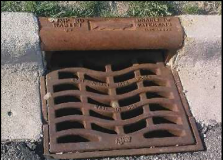How to properly handle concrete washout
The Macomb County Public Works Office (MCPWO) works with local municipalities, businesses and residents to promote the best management practices for clean water to enhance the quality of life in Macomb County. When it rains, water that drains from buildings, roads or other hard surfaces deposits directly into your local storm drains and begins a journey that ultimately ends in Lake St. Clair. It is critical that we eliminate pollution and other contaminants before they enter our streams, rivers and lakes. Clean water is vital not only to the quality of life in Macomb County, but can serve as a critical component of economic development in our communities.

What is it?
Concrete washout water is the washwater that is leftover after cement work is done and the equipment has been cleaned up with water. In order to minimize or eliminate the discharge of concrete waste materials into the storm drains, it is important to follow proper procedures and practices. This washwater contains toxic metals and has a pH value near 12, making it very caustic and corrosive. A neutral pH value is 7 and numbers greater than 7 show increasing alkalinity while lower numbers represent increasing acidity. The safe pH value range for freshwater is 6.5 to 9. Equipment that is commonly washed out after cement work is done includes: the drum from the concrete truck,
the chutes and hoppers, wheelbarrows and hand tools. A slurry of water and concrete washout water is created that must be disposed of properly so it does not enter the storm drain system which would contaminate the local waterways.
Best management objectives
According to the Environmental Protection Agency (EPA 833-F-11-006), the best management practice objectives for concrete washout are:
- When cleaning equipment, operators need to retain all concrete washwater and solids in approved containers with leak proof designs so the washwater does not reach storm drains or soil surfaces that could runoff into local waterways or ground water.
- Collect 100% of concrete washwater and solids and recycle them to prevent materials from ending up in a landfill.

Making sure all of the concrete equipment is cleaned out properly prevents the concrete washout from leaking into nearby surfaces. This prevents washwater from entering the waterways which can cause pollution problems in surface waters and the soil.






